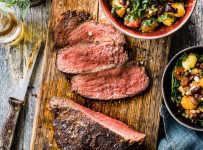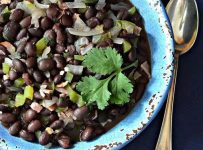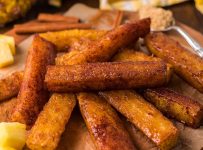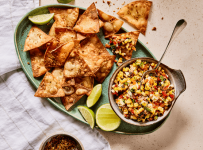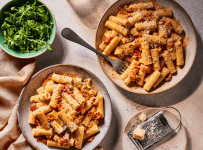Brazilian Cheese Bread (Pão de Queijo): A Taste of Tradition
Brazilian Cheese Bread, known as Pão de Queijo, is a beloved staple of Brazilian cuisine that has captivated the taste buds of people around the world. These small, cheesy, and chewy rolls are not only delicious but also hold a special place in Brazilian culinary tradition. Whether enjoyed as a snack, breakfast treat, or accompaniment to a meal, Pão de Queijo offers a unique texture and flavor that make it a standout dish. This article explores the origins, preparation, and cultural significance of Pão de Queijo, as well as tips for making the perfect batch at home using the Allrecipes recipe.
A Brief History of Pão de Queijo
Pão de Queijo has its roots in the Minas Gerais region of Brazil, dating back to the 18th century. The recipe likely evolved from a time when cassava, also known as tapioca, was widely used as a substitute for wheat flour in the region. Cassava, a root vegetable native to South America, is the key ingredient in Pão de Queijo, giving the bread its distinct texture. The cheese used in the original recipe was typically Minas cheese, a soft, mild cheese produced in the region. Over time, Pão de Queijo became a cherished part of Brazilian culinary culture, enjoyed by people of all ages and backgrounds.
Ingredients
The beauty of Pão de Queijo lies in the simplicity. The Allrecipes version calls for a few basic ingredients that come together to create a delicious and satisfying treat:
- 1/2 cup of olive oil or butter
- 1/3 cup of water
- 1/3 cup of milk
- 1 teaspoon of salt
- 2 cups of tapioca flour
- 2 teaspoons of minced garlic
- 2/3 cup of freshly grated Parmesan cheese
- 2 beaten eggs
Preparation
- Preheat the Oven: Begin by preheating your oven to 375°F (190°C). Grease a mini muffin tin or line it with paper liners to prevent sticking.
- Heating the Liquids: In a saucepan, combine the olive oil, water, milk, and salt. Heat the mixture over medium heat until it just comes to a boil, then remove it from the heat.
- Mixing the Dough: In a large mixing bowl, add the tapioca flour. Pour the hot liquid mixture over the flour, stirring with a wooden spoon until the mixture is smooth and well combined. The heat will help cook the tapioca flour slightly, creating a sticky, dough-like consistency.
- Incorporating the Cheese and Eggs: Allow the mixture to cool slightly, then stir in the minced garlic and grated Parmesan cheese. Finally, add the beaten eggs, one at a time, mixing until the dough is smooth and elastic. The dough will be sticky, but this is normal for Pão de Queijo.
- Shaping and Baking: Spoon the dough into the prepared mini muffin tin, filling each cup about three-quarters full. Bake in the preheated oven for 15 to 20 minutes, or until the tops are golden brown and the Pão de Queijo has puffed up. The result should be a crispy exterior with a soft, chewy interior.
- Serving: Serve the Pão de Queijo warm, straight from the oven. They are best enjoyed fresh but can also be reheated in the oven for a few minutes if needed.
Tips for Perfect Pão de Queijo
- Use Quality Tapioca Flour: The texture of Pão de Queijo heavily depends on the tapioca flour. Ensure you use high-quality tapioca flour, as this will affect the chewiness and elasticity of the final product.
- Experiment with Cheese: While Parmesan is used in this recipe, you can experiment with other types of cheese to suit your taste. Traditional Minas cheese is hard to find outside Brazil, but a combination of mozzarella and sharp cheddar can offer a similar flavor profile.
- Adjust the Consistency: The dough should be sticky but manageable. If it’s too thick, add a bit more milk to loosen it up. Conversely, if it’s too runny, a little extra tapioca flour can help thicken it.
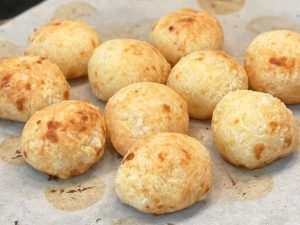
Cultural Significance
Pão de Queijo is more than just a snack in Brazil; it’s a symbol of hospitality and comfort. It’s commonly served at breakfast, alongside coffee, or as a snack throughout the day. In Brazil, it’s not uncommon to find Pão de Queijo served at gatherings, family celebrations, and even in cafes. The bread’s popularity has spread beyond Brazil, and today it’s enjoyed in many parts of the world, especially in regions with large Brazilian communities.
Pão de Queijo’s gluten-free nature also makes it a popular choice for those with gluten sensitivities. The use of tapioca flour, instead of wheat, gives it a naturally gluten-free profile, allowing more people to enjoy its delicious flavor and unique texture.
Conclusion
Brazilian Cheese Bread, or Pão de Queijo, is a delightful and versatile dish that has captured the hearts of many, both in Brazil and beyond. Its chewy texture, rich cheese flavor, and crispy exterior make it an irresistible treat for any occasion. Whether you’re looking to explore Brazilian cuisine, cater to a gluten-free diet, or simply indulge in a tasty snack, Pão de Queijo is a recipe worth trying. With the straightforward instructions from Allrecipes, you can easily bring this authentic Brazilian delight into your kitchen and share it with friends and family. Enjoy the warm, cheesy goodness of Pão de Queijo, and experience a taste of Brazil’s rich culinary heritage.
